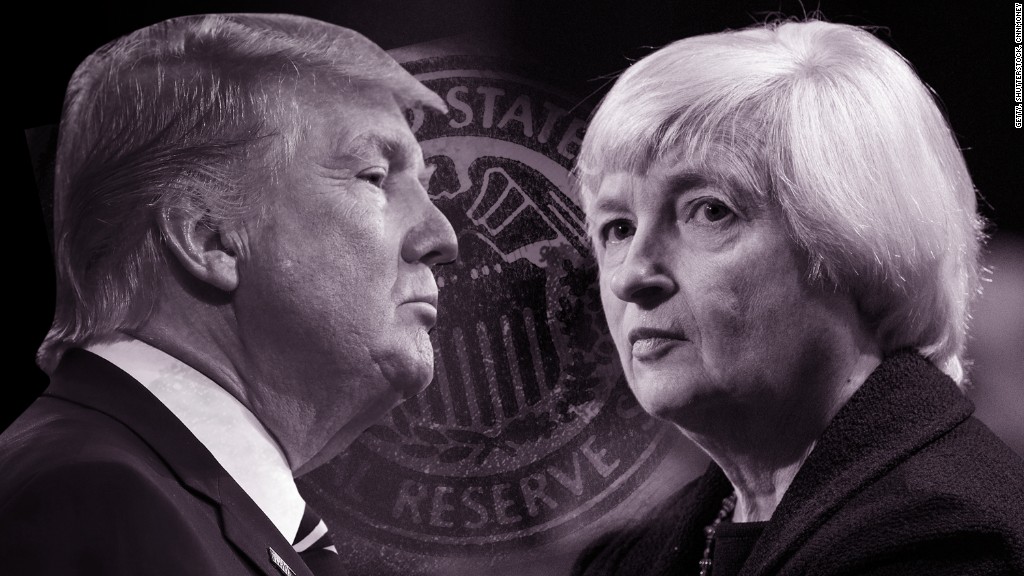
Janet Yellen jump-started the economy while wrestling with mysteriously low inflation. Incoming Fed Chair Jay Powell may face the opposite challenge.
He'll have to make sure the Fed acts fast enough.
Economists are watching whether inflation finally picks up this year. Unemployment is low, and the job market is tight, so employers will have to pay more to attract and keep workers. That means businesses may have to raise prices.
After Yellen steps down this week, Powell's Fed will watch how quickly inflation speeds up. The Fed has penciled in three interest-rate increases this year.
So far, economists believe that Powell thinks three will be enough, but that he could be open to changing his mind if circumstances change. If inflation stays below the Fed's 2% target -- the level policy makers consider healthy for the economy -- three could be too many.
Related: Jerome Powell confirmed as next Federal Reserve chair
As expected, the Fed left interest rates unchanged on Wednesday after its January policy meeting. The central bank said it would continue to "carefully monitor" inflation.
Keeping rates where they are lets the Fed pause before it changes its leadership.
After she leaves, the Fed board could be inclined to raise rates faster because of new members on the panel than Yellen's more dovish committee.
Powell will need to contend with the effects of fiscal policy stimulus following the Trump administration's $1.5 trillion tax cut and possible $1.5 trillion plan to rebuild the nation's aging infrastructure.
The Fed will also be keeping an eye on what happens at foreign central banks, including the European Central Bank and the Bank of Japan, as global growth becomes a focal point this year.
New views will come to the Fed board this year. Cleveland Fed President Loretta Mester, an inflation hawk, will have a voting seat. And the Richmond Fed has a new president, Tom Barkin. His monetary policy views are unknown, but the Richmond Fed has traditionally leaned hawkish.
Powell is the longest-serving member on the Fed board, and analysts expect the board to follow his lead this year when it comes to setting the central bank's benchmark interest rate.
Having supported former Fed Chairman Ben Bernanke's stimulus programs in 2012 and 2014 and his experience on the board when the Fed wound down its easy money policies, Powell brings credibility and stature as a policy maker to his new role.
"He should be able to lead the FOMC in the direction that he thinks is appropriate," Kevin Logan, chief U.S. economist at HSBC, wrote in a note to clients. "The rest of the committee may rely on him to make the tough decisions on policy as the year progresses."
The Fed's policy-setting committee is made up of 12 voting members. Each of the seven governors sits on the board along with the New York Fed president. Four other slots rotate each year among the 11 other regional Fed bank presidents.
--This story has been updated to clarify the characterization of the Richmond Fed seat.


